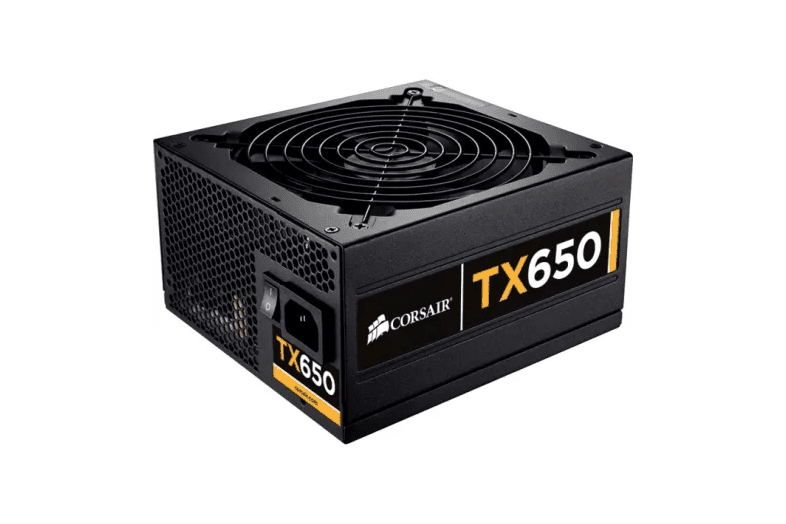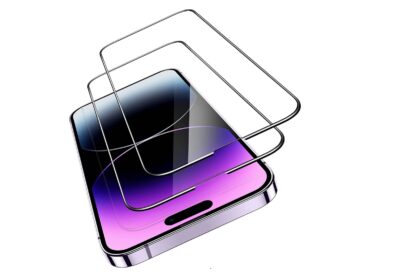Welcome to a friendly primer on how a power unit feeds a computer. A supply converts wall alternating current into stable direct current. That change is why correct leads and connections matter for system stability and lifespan.
We will break down every major connector: the 24-pin ATX motherboard plug, 4+4 or 8-pin EPS for CPUs, 6+2 and 8-pin PCIe for graphics, and the newer 16-pin 12VHPWR / 12V-2×6 for high-end cards. Peripherals use SATA power or legacy Molex leads.
Safety first: always switch off and unplug before work. Fully seat each plug until the latch clicks and avoid mixing modular cords between different psu models or brands to prevent shorts and damage.
This guide sets expectations: clear maps of where each connector goes, tips for neat routing, and quick fixes for common mistakes. A tidy, correctly matched setup improves airflow, makes maintenance easier, and lowers the chance of future headaches.
Ultimate Guide Overview: PSU cables, standards, and today’s best practices
Get a quick map of modern wiring and standards so you can match each plug to its job. Modern units include a 24-pin ATX for the motherboard, EPS 4+4/8-pin for CPU, 6+2 and 8-pin for GPUs, SATA for drives, Molex for older devices, and 12VHPWR for high-power graphics.
Safety first: always turn the unit off and unplug from the wall before touching leads. Verify wattage headroom up front and plan runs to avoid tight bends, especially on 12VHPWR connectors.
Use only manufacturer-provided cords for modular systems. Mixing cables between different psus can cause shorts and damage. Fully seat each connector until the latch clicks to prevent intermittent faults.
- Know the difference between a connector and its cable; latch orientation matters.
- Leave amperage headroom for spikes and heavy loads.
- Semi-modular designs reduce clutter and improve airflow.
Later sections will detail ATX, EPS, PCIe, 12VHPWR, peripheral power, installation steps, and troubleshooting tips so you can build with confidence.
Motherboard and CPU power connectors: ATX 24-pin and EPS 4+4/8-pin
Start here: the main board and CPU links set electrical expectations for a stable system.
24-pin ATX motherboard power: 20+4 compatibility and placement
The 24-pin atx harness sits along the board edge and supplies core rails for chipset logic, slots, and onboard controllers.
Many units use a 20+4 layout so older motherboards accept modern cables. Fit the 20-pin portion first, then clip the extra four into place for a firm, oriented connection.
EPS CPU power: 4+4 vs 8‑pin and when extra CPU connectors matter
EPS lines feed the cpu power stages near the socket. Most cables split to 4+4 for legacy support but latch as an 8‑pin for full delivery.
High-end motherboards may add another 4‑pin or second 8‑pin for overclocking headroom. Use extra leads when you run heavy loads or push voltage and clock margins.
Voltage rails, pins, and current standards today
Steady voltage rails reduce electrical noise and protect memory controllers and VRMs. Fully seated pins prevent intermittent resets or boot loops.
Cable routing matters: route thick 24‑pin and EPS runs to free airflow to VRM heatsinks and make future upgrades easier. Always use matching psu-provided cable sets so pin mapping aligns with modular ports.
PCIe GPU power basics: 6-pin, 8-pin, and multi-connector requirements
High-end graphics cards often demand more than one dedicated feed from a psu. Many modern units ship 6+2 connectors so a single cable will fit either a 6-pin or 8-pin port. That versatility keeps builds tidy without mismatched plugs.
Read the spec sheet to find how many plugs a card needs. If a GPU lists two 8‑pin sockets, plan for two separate cable runs from the psu rather than daisy‑chaining a single lead.
6+2-pin flexibility for modern GPUs and typical wattage loads
6-pin connectors commonly supply up to 75W, while an 8-pin adds about 75–150W headroom depending on rail design. A 6+2 plug covers both formats and avoids adapter hacks.
Single-cable vs separate runs: avoiding instability and performance drops
Use separate cable runs for multi‑plug cards to cut voltage drop during heavy loads. Daisy‑chaining multiple 8‑pin sockets from one run can cause throttling, crashes, or artifacting under stress.
- Confirm latch direction and listen for a firm click when seating each connector.
- Allow wattage headroom to handle transient spikes that cause momentary dips.
- Remember older cards draw less; newer models can need two or three plugs.
| Connector Type | Typical Wattage | When to use separate runs |
|---|---|---|
| 6-pin | ~75W | Single midrange cards with one plug |
| 8-pin (or 6+2) | ~150W (varies) | High-performance cards or second plug on beefy models |
| Two or three 8-pin | 300W–450W+ | Use separate runs from psu for stability |
12VHPWR and 12V-2×6 connectors for high-power GPUs
Modern cards demand a more compact route for heavy current. The 12VHPWR is a 16-pin interface with twelve main power pins and four small sense pins that let gpu and psu negotiate delivery up to 600W.
What that connector does
Sense lines tell a unit how much draw a card needs before enabling full rails. Proper seating matters: press until the latch clicks and avoid sharp bends at the plug to reduce heat and contact loss.
Safer revisions and common issues
Early reports of melting tied to partial insertion or extreme bending. The 12V-2×6 update lengthened main terminals and shortened sense pins to ensure power pins mate first and lower risk of arcing.
Compatibility and adapters
Adapters from multiple 8-pin leads exist, but a native cable from a PCIe 5.0-ready psu is safer and cleaner. Updated leads remain backward compatible with original sockets, yet follow strain-relief and routing best practices.
- Symptoms of poor seating: intermittent black screens, discoloration, or burning odor.
- Always work with the unit unplugged and check every click after a first stress run.
| Connector | Power capability | Best use |
|---|---|---|
| 12VHPWR | Up to 600W | High-end gpus |
| 12V-2×6 | Up to 600W (safer) | PCIe 5.0-ready units |
| 3×8-pin adapter | Varies | Fallback only; prefer native cable |
Other PSU cables: SATA power and Molex explained
A flat 15‑pin plug delivers 3.3V, 5V, and 12V for many drives and hubs. That slim profile fits SSDs, HDDs, optical media, and RGB accessories without extra adapters.
Do not confuse this feed with a data ribbon. SATA power carries voltage to storage devices while a separate thin data cable handles signals. Mixing them up can cause detection failures or a failed boot.
Many fan hubs and RGB controllers accept a single SATA power lead for easy distribution. Daisy‑chain connectors along one run to reach multiple mounts, but avoid tight bends near sharp chassis edges.
- SATA power: flat, multi‑voltage, neat routing for case parts.
- Molex (4‑pin): legacy; stiffer pins, awkward fit, prone to partial contact.
- Modern replacement: choose accessories that accept SATA power when possible.
| Type | Voltage | Best use |
|---|---|---|
| SATA power | 3.3V / 5V / 12V | Drives, RGB hubs, fan controllers |
| Molex | 5V / 12V | Legacy devices; avoid if possible |
| Adapter | Varies | Fallback only; prefer native power cable |
Always use the cable set provided with your unit. Fully seat each connector and keep stress off wires near tight corners. Even small devices can draw meaningful current; a loose plug causes flicker or damage.
The Cables in Your PC’s Power Supply, Explained: installation and safety
A simple prep step—unplug, ground yourself, and lay out which lead goes where—saves time and headaches. Verify unit wattage meets or exceeds power requirements. Plan runs to keep air moving and avoid sharp bends near connectors.
Preparation checklist
Start safe: switch off the rear switch, unplug from wall, and use an anti-static strap or touch grounded metal before handling parts.
Gather tools: flashlight, zip ties, and a multimeter or PSU tester for troubleshooting.
Step-by-step connections
Route the 24-pin first and seat it until the latch clicks. Next attach the EPS 4+4 or 8-pin near the cpu socket.
Connect GPU PCIe leads next; use separate runs for multi‑plug cards to reduce voltage drop. Finish with SATA power runs to drives and hubs.
Common pitfalls and quick fixes
- Never mix modular leads across different psus—pinouts differ and cause damage.
- Ensure 12VHPWR fully seats; avoid tight bends at the plug and check strain relief.
- If system won’t start, reseat 24-pin and EPS first. For instability, confirm GPU connections and use a tester or multimeter.
| Step | Action | Why it matters | Quick check |
|---|---|---|---|
| Prep | Unplug and ground | Prevents shock and static damage | No power LED on PSU |
| Main board | Seat 24-pin | Primary rail for system stability | Firm click; board posts |
| CPU | Attach EPS 4+4/8-pin | Feeds VRMs under load | No boot loops under load |
| GPU | Use separate PCIe runs | Reduces voltage drop and improves performance | No artifacts or random shutdowns |
Compatibility and choosing the right PSU and cables for your build
Start by matching connector needs to a candidate unit. Check motherboard for an ATX 24‑pin and note EPS 4+4 or 8‑pin requirements near the cpu socket. List GPU feeds: PCIe 6+2/8‑pin or 12VHPWR/12V‑2×6. Mark how many SATA plugs and any Molex runs you need for accessories.
Estimate total draw. Use a reputable online calculator and add about 20% headroom to cover spikes during games or heavy workloads. Factor in future upgrades so the unit won’t max out under load.
Choose quality and efficiency. Look for 80 PLUS ratings and units with solid protections. Higher efficiency often means cleaner rails, lower heat, and quieter fans—benefits for long‑term performance.
- Prefer modular units to fit only required power cable runs and reduce clutter.
- Validate cable compatibility with exact model numbers; avoid mixing sets across brands.
- Plan routing and extension lengths for large cases to keep airflow unobstructed.
| Factor | Recommendation | Why it matters |
|---|---|---|
| Connector matching | Map ATX, EPS, PCIe, 12VHPWR before purchase | Prevents adapter reliance and ensures stable contacts |
| Wattage & buffer | Calculate total draw +20% margin | Handles transient spikes and future upgrades |
| Modular vs non-modular | Choose modular for custom builds; non-modular for tight budgets | Modular reduces clutter and simplifies swaps |
| Efficiency | Pick 80 PLUS Bronze or higher | Improves lifespan, noise, and thermal performance |
Conclusion
Finish strong by confirming every header, latch, and pin is aligned before powering up. strong.
Quick checks save time: seat the 24‑pin ATX, EPS 4+4/8‑pin, PCIe 6+2/8‑pin, and any 12VHPWR or 12V‑2×6 until each latch clicks. Use native leads, avoid mixing modular sets, and run separate PCIe feeds for multi‑plug cards to reduce voltage drop and stress on traces.
Plan for headroom, choose a modular power supply that meets future needs, route runs cleanly, and keep sata power or Molex lines tidy. Follow safety: unplug the unit, respect electricity, and use gentle bends near connectors to protect pins and devices.
FAQ
What is the difference between the 24-pin ATX and the EPS 4+4/8-pin connectors?
The 24-pin ATX supplies the motherboard’s main power and must be fully seated for startup. EPS 4+4/8-pin delivers dedicated 12V power to the CPU. Use an 8-pin where the board asks for EPS; a 4+4 can pair to form 8-pin. High-end CPUs or overclocking may need an extra EPS connector for stable delivery.
Can I use a 20+4 ATX plug in a 24-pin socket?
Yes. The 20+4 design is intentionally backward compatible. Slide the 4-pin portion into place and ensure the clip locks. If the clip won’t seat, avoid forcing it—check orientation or cable type before powering on.
When should I choose 6+2 PCIe cables versus fixed 8-pin for a GPU?
Choose 6+2 for flexibility: it covers 6-pin and 8-pin GPU sockets. Fixed 8-pin is fine if the PSU provides enough separate rails or dedicated runs. For multi-GPU or high-wattage cards, prefer separate cables from the PSU to reduce voltage drop and heat.
What is 12VHPWR and do I need the new 12V-2×6 revision?
12VHPWR is a 16-pin connector (12 power pins + 4 sense pins) used for high-power GPUs and can handle up to ~600W. The 12V-2×6 revision addresses insertion and contact safety by splitting some pins for better mechanical reliability. Use the revision if your PSU or GPU manufacturer recommends it for safety.
Are adapters safe for converting PCIe to 12VHPWR?
Adapters can work but carry risk if the PSU cable gauge or multiple rails aren’t designed for the load. Use adapters only from reputable brands and ensure the PSU can provide required amperage. Monitor temps and connector seating after the first boot.
How many SATA power connectors should I expect on a modern PSU?
Modern modular PSUs usually include several SATA power leads—commonly 4–8 per cable chain. Budget builds may have fewer. Count storage devices, optical drives, and RGB hubs, and choose a PSU with extra heads or use a short, high-quality adapter if needed.
When is Molex still useful, and should I avoid it?
Molex remains useful for some case fans, older devices, and adapters. It’s bulky and lacks the keyed SATA features, so avoid it for modern storage. Use Molex only when no other option exists and consider fan adapters or new peripherals instead.
What safety steps should I follow before connecting PSU cables?
Turn off and unplug the PSU, disconnect mains, and ground yourself. Verify wattage headroom, inspect connectors for bent pins, and use correct orientation. Route cables to avoid strain, and reconnect power only after checking secure latches and proper seating.
Can I mix modular cables between different PSU models or brands?
Never mix cables between different PSU models or brands. Pinouts can vary, and wrong wiring can cause component damage. Use only cables supplied with the same PSU model or manufacturer-approved replacements.
How do I avoid voltage drop and instability with high-power GPUs?
Use separate PCIe runs from the PSU for each GPU connector, choose thicker-gauge cables if provided, and ensure the PSU wattage and amperage meet GPU peak draws. Keep cable lengths reasonable and avoid daisy-chaining too many connectors on one lead.
What are the signs of a damaged 12VHPWR or PCIe connector I should watch for?
Look for bent or burned pins, loose fit, melting plastic, or discoloration near the latch. Intermittent crashes, shutdowns, or visible arcing are red flags. Replace damaged cables and connectors immediately and inspect the PSU and GPU socket for damage.
How do I match a PSU to my build’s power needs and connectors?
Calculate peak system wattage including CPU and GPU, add headroom (20–30%), and confirm required connectors: ATX 24-pin, EPS 8-pin(s), PCIe 6/8/12VHPWR, and SATA. Choose an 80 PLUS rated unit from reputable brands like Corsair, Seasonic, or EVGA for efficiency and reliability.
Are there any special torque or insertion tips for the 24-pin and EPS connectors?
Press straight and firm until the latch clicks; don’t force at an angle. If a pin resists, remove and inspect for debris or misalignment. Avoid bending or crimping the cable exit and keep strain relief in place to protect pins and traces.
How often should I inspect PSU cables and connectors?
Inspect cables during upgrades or annually for home systems. Check for fraying, loose pins, or heat damage after heavy workloads or GPU upgrades. Replace suspect cables immediately—don’t risk intermittent failures or electrical hazards.
























